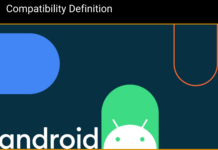Android is definitely the world’s most widely used mobile operating system at the moment, because of its flexible and open nature. Billions of devices including Smartphones,Tablets, Smartwatches and other gadgets today run on Android. What actually enhances the user experience on Android is the number of cool and great applications available in the Play Store that are able to perform all the tasks of a user that he/she would expect from a smartphone, and a number of games is there that will never let you feel bored.
There are quite a few reasons that make a user fall for an Android device. This paves a way for a number of manufacturers to step in. While you start looking for a cheap Android device, whether as a starter or just in case you cannot afford, you will find a number of local manufacturers and some international manufacturers offering a hefty list of devices at an extremely cheap price e.g $40 or $50 (off contract). That will be spiced up in such a way that it gets hard to resist buying it. These days there’s a number of Tablet manufacturers, especially the Chinese manufacturers that sell the tablets like some everyday food and prices are extremely low, but as soon as you use any of those devices, you come to know that its actually a great choice as long as it remains a toy and you can’t keep that device as your everyday companion. You need to give it a thought before going with some low-class Android device. It is preferred to make the best decision while emptying your pocket on a smartphone or tablet and this is what we are here for today. I’ve compiled up the best reasons that stress upon avoiding a cheap Android smartphone. Let’s move forward and learn why you should never buy a cheap Android device.
1. Build Quality/Material Is Not So Good
Let’s classify the manufacturers into two categories first. There are low-end and local manufacturers (some of the Chinese manufacturers), and there are high-end manufacturers like Samsung, HTC, LG and others.
If you’re planning to get a device from a low-end manufacturer, the very thing you should keep in mind is, no matter how beautiful the device looks, its build quality is actually going to annoy you. A cheap device means cheap, if the manufacturer is providing you the device at an extremely low cost, there must be some reason behind this and one of the reasons standing atop of the list is the material used to build that device.
Let’s talk about a mainstream manufacturer, e.g Samsung, HTC. Samsung’s high end devices come with Gorilla Glass Corning, and with each high end device, Samsung tries to improve its build quality and bring up some new design, just like it brought up the Faux Leather design for the Galaxy Note 3 that’s hard to make the scratches on, and the dotted back of the Galaxy S5 that’s quite tough as well. Gorilla Glass Corning is there on the screen to protect it from any rough and tough scratches, and helps keep the device’s display as safe as possible, and yeah, Galaxy S5 is resistant to water and dust as well. Now that is Samsung’s flagship device and that’s costs quite a lot. Do you expect the same features in a low-cost device, let’s say, Samsung Galaxy Star? or Samsung Galaxy Ace? No! not at all. So don’t put that on your choice list.
2. Low Quality Touchscreens / Display
When you’re going for an Android device, you surely expect a lot from it. The device’s display and graphics have to be awesome so that you can actually unleash the true power of your droid. Just in case the colors, transitions, animations, and the navigation do not work properly, you’ll probably dislike your Android device. In short, display matters more than a lot.
Low-end manufacturers use extremely low quality touchscreens on their devices, and when you use them, it feels like swiping your fingers on some ordinary plastic material, the screen doesn’t seem like a screen and thus you loose the charm of Android. Samsung uses Super AMOLED screens provided by Gorilla Glass Corning in its front end and flagship devices, but uses IPS touchscreen display in its low-end and mid-range devices including the tablets too, and the difference gets obvious once you use a Galaxy S5 and a Galaxy Grand. So, you actually need to keep this in mind before you invest your money on such a device.
3. Low Speed Processors
Most of the high end Android devices are getting powered up with Quad Core CPUs these days and some are getting powered up with Octa Core CPUs e.g Samsung’s Exynos Galaxy S4, Note 3, S5. Manufacturers always use the most powerful CPUs and GPUs on their mainstream devices, and take this charm away from their low end devices. To run the Android applications perfectly on your device, you’ll need a compatible CPU and a compatible GPU as well, so there surely will be a number of Applications that HTC One M8 or Galaxy S5 will be capable of running, but an HTC Desire or Galaxy Ace or Galaxy Core won’t be able to run those devices.
Low end manufacturers, including some of the Chinese manufacturers, do not use a power full CPU and GPU on their devices in order to keep the costs as lower as possible. Those devices are actually good as long as you don’t want to go beyond the phone and texting feature of the device.
So, before you invest on some cheap device, you need to keep your use of an Android device in mind and take the decision accordingly.
4. Lesser RAM
Applications are always RAM hungry. More applications you load on your Android device, more RAM you need. Performance of Android applications depends on the CPU, GPU at first, and then depends on the RAM. If your device doesn’t have a good RAM, it’s going to get hanged again and again until and unless it doesn’t free up some RAM to prioritize the on-going tasks on your smartphone. Let’s take anther example here, Samsung’s Galaxy S3 is capable of running a number of applications with its 1 GB RAM, the other reason that helps the device to work perfectly is its Quad Core CPU, on the other hand, Galaxy Grand will lack in running the same applications having the same 1 GB RAM, but the CPU is a Dual Core. So the difference is clear, you need to pick up a device with proper CPU and proper RAM.
5. Forget Android Updates
Don’t get fooled by the local device manufacturers when it comes to Android updates. I’ve personally used a number of devices, and those devices never got an Android update and remained at the factory OS , that came pre-installed. For example, you get a device running Android 4.2.2, the device will stay on Android 4.2.2 forever and won’t receive any Android update.
On the other hand, when it comes to a mainstream smartphone giant, they will take a very long time to update their device to any further version of Android, and that too is not even guaranteed because if any issues comes up, it might kill the further update for the device. Investing in a high end device like a Galaxy S4, S5 or an HTC One M8 or LG G3 is quite useful here as its obvious that all these three manufacturers will always bring the latest updates to their mainstream devices first of all.
6. No Android Development
Android is all about openness. If you can’t go beyond the boundaries on your Android device, it literally is of no use then. Suppose if you own an Android device, that the developers don’t even know about, what are you going to do with that? Sometimes its just hard for the Android freaks to stick with the stock OS and bear the factory limitations, so a little freedom is necessary that is made possible by flashing custom recoveries, rooting the device and flashing custom ROMs and mods.
For the low cost devices by smartphone giants like Samsung, HTC, Sony and others, you will find the development stuff, but that won’t be good enough to mess with. But, as soon as you jump up to some development thread of a flagship device of a company, you will find a great amount of stuff to play with, and sometimes you just get confused about what to pick up and tweak your device with. So this choice is in your hands as well whether you want to invest on a device with a great life or you want to go with a device with a very sad and dull life.
7. Hardware Is Hard To Get Repaired
The hardware installed in cheap Android device isn’t going to be great ever. There are high chances of getting it malfunctioned and as soon as you get your device on a repairing shop, the very problem you’re going to face is, either its hard to get repaired or its parts are not available. A high end device is popular, so the manufacturers make it sure that the device owners never face a problem and they are facilitated in all the ways. Besides this, it’s actually better not to waste too much money on getting a cheap device repaired, because sometimes, the repairing costs might go above the cost of the device itself. So, make sure that you pick up a device that’s actually easy to maintain in all the ways.
The Wrap Up:
It’s actually easy to get a cheap Android device, and that will do a number of your tasks without any hiccups here and there, but that’s gonna be temporary. So its better to make a big move once and get a high end device, at least it won’t annoy you with the problems popping up everyday, that are common with low-end Android devices. Although I’ve tried my best to explain the main reasons to avoid a cheap Android device, but I surely will be missing a number of reasons that add to it. Let’s wrap it up with, Buy Once and Cry Never! Have your say on these 7 reasons in the comment box below, We’ll be glad to hear from you. Thanks all!












